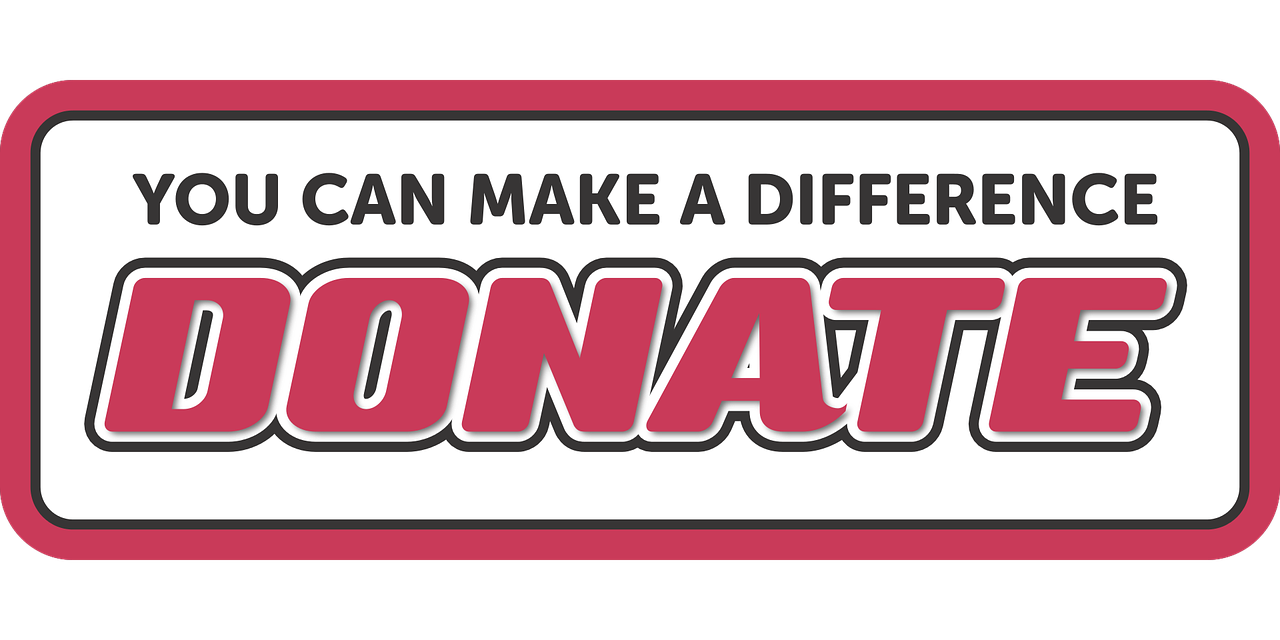In today’s ever-evolving digital landscape, it is essential for businesses to understand the importance of sponsored content disclosure rules. These rules serve as a critical safeguard, ensuring transparency and accountability in online advertising and promotional practices. By familiarizing yourself with these regulations, you can navigate the often complex world of sponsored content and establish trust with your audience. In this article, we will explore the key aspects of sponsored content disclosure rules and provide you with valuable insights that will help you comply with these guidelines effectively.

Sponsored Content Disclosure Rules
Sponsored content has become increasingly prevalent in the digital age, blurring the lines between advertising and editorial content. To ensure transparency and protect consumer interests, various regulatory bodies have implemented sponsored content disclosure rules. Understanding and complying with these rules is crucial for businesses engaged in sponsored content marketing. This article will delve into the importance of disclosure, the definition and forms of sponsored content, regulatory bodies overseeing compliance, disclosure requirements for different platforms, penalties for non-compliance, and best practices to ensure adherence to these rules.
Why are sponsored content disclosure rules important?
Protecting consumer interests
Disclosure rules for sponsored content are essential for safeguarding consumer rights and interests. When a piece of content is sponsored, meaning a company or brand has paid for its creation or promotion, it is important for consumers to be aware of this fact. Transparency allows consumers to make informed decisions and avoid being misled. By disclosing sponsorship, businesses can uphold their responsibility to provide accurate and honest information to their audience.
Maintaining trust and credibility
In the world of content marketing, trust and credibility are crucial for building long-term relationships with consumers. When businesses fail to disclose their sponsorship and create the illusion of independent, unbiased content, they risk damaging the trust they have established with their audience. Disclosure rules help maintain trust by ensuring that sponsored content is clearly identified, allowing consumers to distinguish between objective information and promotional material.
Avoiding misleading or deceptive practices
Failure to disclose sponsorship can lead to misleading or deceptive practices, potentially breaching consumer protection laws. When sponsored content is presented as unbiased or genuine, it can mislead consumers into making uninformed decisions. By enforcing disclosure rules, regulatory bodies aim to prevent these misleading practices and protect consumers from potential harm.
What is sponsored content?
Definition of sponsored content
Sponsored content refers to any content that is created or promoted by an advertiser in collaboration with a publisher or media outlet, in exchange for compensation. It is a form of marketing that blends seamlessly with the platform it is published on, often mimicking the style and format of non-sponsored or editorial content. Sponsored content can encompass various formats, such as articles, videos, social media posts, or podcasts.
Different forms of sponsored content
Sponsored content can take on several forms, each with its own unique characteristics. Native advertising involves integrating promotional content seamlessly into a platform’s natural flow, making it indistinguishable from regular content. Branded content focuses on the brand’s story or values, typically featuring a company’s products or services. Influencer marketing involves paying influencers to promote a brand or product to their audience. Social media promotions include sponsored posts or endorsements on platforms such as Facebook, Instagram, or Twitter. Advertorials are advertisements presented in the form of editorial content. Lastly, product placements involve showcasing a brand’s product within the context of a television show, movie, or other media.
Purpose and objectives of sponsored content
The primary purpose of sponsored content is to promote a brand, product, or service by leveraging the reach and credibility of a publisher or influencer. The objectives can vary but commonly include increasing brand awareness, driving engagement and conversions, and reaching target audiences in a more authentic and non-intrusive manner compared to traditional advertising.
The importance of transparency
Building trust with the audience
Transparency is integral in building and maintaining trust with consumers. By clearly disclosing sponsored content, businesses demonstrate respect for their audience and their intelligence. When consumers are aware that a piece of content is sponsored, they can evaluate it with the necessary context, enabling them to make informed decisions. Transparent communication fosters trust and a stronger relationship between brands and their consumers.
Avoiding potential legal issues
Failure to comply with sponsored content disclosure rules can have legal consequences. In many jurisdictions, consumer protection laws require businesses to disclose their sponsorship to avoid misleading or deceptive practices. By adhering to the disclosure rules, businesses can mitigate the risk of legal challenges, fines, or other legal repercussions.
Creating an ethical content marketing strategy
Transparency in sponsored content is not just about legal compliance, but also about ethics and responsible marketing practices. Businesses have a duty to act ethically and deliver clear, honest, and authentic messaging to their audience. By incorporating disclosure as a fundamental aspect of their content marketing strategy, businesses can uphold ethical practices and enhance their reputation in the marketplace.

Regulatory bodies overseeing sponsored content
Federal Trade Commission (FTC)
In the United States, the Federal Trade Commission (FTC) plays a crucial role in regulating sponsored content. The FTC provides guidelines and rules that businesses and content creators must follow when engaging in sponsored content marketing. One of the FTC’s core principles is that advertisements should be truthful and not misleading, which includes proper disclosure of sponsorship in all forms of content.
Advertising Standards Authority (ASA)
In the United Kingdom, the Advertising Standards Authority (ASA) is responsible for overseeing and enforcing advertising standards. The ASA specifically addresses the disclosure of sponsored content through various media, such as social media platforms, blogs, and print media. Advertisers and content creators must comply with the ASA’s guidelines to maintain transparency and ensure their content meets industry standards.
Other relevant regulatory bodies
Apart from the FTC and ASA, other countries have their own regulatory bodies overseeing sponsored content. For example, Canada has the Competition Bureau, and Australia has the Australian Association of National Advertisers (AANA). It is essential for businesses engaged in sponsored content marketing to familiarize themselves with the relevant regulatory bodies within their jurisdiction to ensure compliance with disclosure rules.
Different types of sponsored content
Native advertising
Native advertising refers to content that seamlessly blends with the platform’s editorial style, making it appear as non-promotional content. It is designed to match the tone, format, and aesthetics of the surrounding content, avoiding disruptions in the user experience. Native advertising often appears as sponsored articles, videos, or social media posts.
Branded content
Branded content focuses on storytelling and capturing the essence of a brand. It prominently features a company’s products, services, or values, usually in the form of articles, videos, or social media campaigns. Branded content aims to create a deeper connection between the audience and the brand, fostering brand loyalty and increasing brand awareness.
Influencer marketing
Influencer marketing involves collaborating with individuals who have a significant following and influence in a particular niche or industry. Influencers promote products or services to their audience through sponsored content, typically on social media platforms. This type of sponsored content relies on the credibility and trust established by the influencer with their followers.
Social media promotions
Social media platforms provide a popular avenue for sponsored content. Businesses can utilize sponsored posts, stories, or endorsements on platforms such as Facebook, Instagram, Twitter, or LinkedIn to reach their target audience effectively. These promotions are marked as sponsored to ensure transparency.
Advertorials
Advertorials are advertisements that mimic editorial content. They often appear in print media, such as newspapers or magazines, but can also be found online. Advertorials present promotional content in a way that resembles regular articles, creating a seamless integration into the publication.
Product placements
Product placements involve featuring a brand’s product or service within the context of a television show, movie, or other media. It offers exposure to a wider audience by integrating the brand into the storyline without overtly displaying it as an advertisement. Product placements are commonly used in the entertainment industry to promote brands subtly.
Disclosure requirements for different platforms
Websites and blogs
When disclosing sponsored content on websites or blogs, businesses should ensure that the disclosure is clear, conspicuous, and located in close proximity to the sponsored content. Disclosures can be made through labels such as “Sponsored,” “Advertisement,” or “Promoted Content.”
Social media platforms
On social media platforms, businesses must make their sponsorship clear by using specific hashtags or labels, such as #sponsored, #ad, or #paid. The disclosure should be placed prominently and separate from the main content, ensuring it is easily noticeable to the audience.
Video-sharing platforms
For sponsored content on video-sharing platforms like YouTube or TikTok, businesses should include disclosure statements in the video itself. These disclosures can be in the form of verbal statements or text overlays that clearly indicate the content is sponsored.
Podcasts and audio content
In the case of podcasts and audio content, businesses should include oral disclosures at the beginning and end of the episode or at any point where a sponsorship is mentioned. The disclosure should be clear and concise, ensuring listeners are aware that the content is sponsored.
Print media
In print media, such as magazines or newspapers, businesses must distinguish between advertisement content and editorial content by utilizing prominent visual cues such as different typography, colors, or layout. Clear and conspicuous disclosure labels should be included to notify readers of the sponsored nature of the content.
Penalties for non-compliance
Fines and monetary penalties
Failure to comply with sponsored content disclosure rules can result in fines and monetary penalties imposed by regulatory bodies. The amount of the penalty varies depending on the jurisdiction and the severity of the non-compliance. Fines can be substantial, acting as a deterrent for businesses to engage in non-disclosure practices.
Legal repercussions
Non-compliance with disclosure rules can also lead to legal challenges from consumers or competitors. Deceptive practices may result in lawsuits, damages, and potential reputational harm. By adhering to disclosure requirements, businesses can avoid potential legal battles and preserve their reputation in the marketplace.
Reputational damage
When businesses fail to disclose sponsorship, it can lead to a loss of trust and credibility among consumers. Reputational damage can have long-lasting effects, impacting a brand’s relationship with its target audience and potentially resulting in decreased sales, customer retention, and overall business success.

How to ensure compliance with sponsored content disclosure rules
Understanding the rules and guidelines
The first step to ensuring compliance is to familiarize yourself with the sponsored content disclosure rules and guidelines set forth by the relevant regulatory bodies in your jurisdiction. Stay updated on changes and revisions to these rules to maintain a compliant content marketing strategy.
Implementing clear and conspicuous disclosures
Make sure that your sponsored content disclosures are clear, prominent, and easy to understand. Use language and visual cues that clearly indicate that the content is sponsored, such as “Sponsored,” “Advertisement,” or relevant hashtags.
Monitoring and reviewing sponsored content
Implement a monitoring and review process to ensure that all sponsored content complies with disclosure rules. Regularly review your content and ensure that any changes or updates in sponsorship are accompanied by appropriate disclosures.
Training staff and influencers
Educate your staff and influencers on the importance of sponsored content disclosure and the specific rules they need to follow. Provide training sessions or guidelines that emphasize the significance of compliance and the potential consequences of non-disclosure.
Seeking legal advice
Consider consulting with legal professionals who specialize in advertising and marketing law to ensure your sponsored content disclosure practices align with the relevant laws and regulations. Legal advice can help safeguard your business from potential legal challenges and ensure compliance with disclosure rules.
Best practices for sponsored content disclosure
To ensure effective disclosure in sponsored content, consider the following best practices:
- Be transparent and disclose sponsorship at the earliest possible point in the content.
- Use clear and conspicuous language that is easily understandable by the audience.
- Separate sponsored content from non-sponsored content to avoid confusion.
- Utilize appropriate labels, hashtags, or other visual cues to indicate sponsorship.
- Regularly review and update your disclosure practices to reflect changes in the regulatory landscape.
Examples of successful sponsored content disclosure
- In a sponsored article on a website, a clear label “Sponsored” is placed at the top of the article, clearly separating it from non-sponsored content.
- A social media influencer posts a photo featuring a sponsored product and includes the hashtag #ad in the caption, making it clear to the audience that the content is sponsored.
- A podcast host starts the episode by stating, “This episode is sponsored by XYZ Company,” ensuring listeners are aware that the content includes a sponsorship.
- In a video on a video-sharing platform, a text overlay appears at the beginning of the video stating, “This video is sponsored by ABC Brand,” providing a clear disclosure to viewers.
- A magazine includes an advertorial with a distinctive typography and layout, accompanied by a clear disclosure label indicating it as an advertisement.
These examples showcase successful sponsored content disclosure practices, with clear and conspicuous disclosures that make it evident to the audience that the content is sponsored.
FAQs about sponsored content disclosure
What is the purpose of sponsored content disclosure?
Sponsored content disclosure serves to inform consumers that the content they are consuming is sponsored or paid for by a brand. The purpose is to provide transparency, allowing consumers to make informed decisions and avoid being misled.
What are the consequences of not disclosing sponsored content?
Failure to disclose sponsored content can lead to legal repercussions, including fines, lawsuits, and reputational damage. It can also harm the trust and credibility businesses have established with their audience, potentially impacting their long-term relationships and business success.
Are there specific guidelines for social media influencers?
Yes, social media influencers are required to comply with sponsored content disclosure rules. They should clearly disclose their sponsorship using hashtags, such as #sponsored or #ad, separating their promotional content from non-sponsored content.
How can businesses ensure compliance with disclosure rules?
Businesses can ensure compliance by understanding the rules and guidelines set by regulatory bodies, implementing clear and conspicuous disclosures, monitoring and reviewing sponsored content, training staff and influencers, and seeking legal advice when necessary.
Can sponsored content be used across all platforms?
Yes, sponsored content can be used across various platforms, including websites, social media platforms, video-sharing platforms, podcasts, and print media. However, businesses must adhere to specific disclosure requirements for each platform to maintain transparency and comply with marketing regulations.
In conclusion, complying with sponsored content disclosure rules is essential for businesses engaged in content marketing. Disclosure ensures transparency, protects consumer interests, and helps build trust and credibility. Businesses should familiarize themselves with the rules and guidelines, implement clear and conspicuous disclosures, monitor and review their sponsored content, train staff and influencers, and seek legal advice when needed. By following best practices and examples of successful disclosure, businesses can maintain a strong reputation, avoid penalties, and attract consumers who value transparency and honesty in their marketing efforts.
